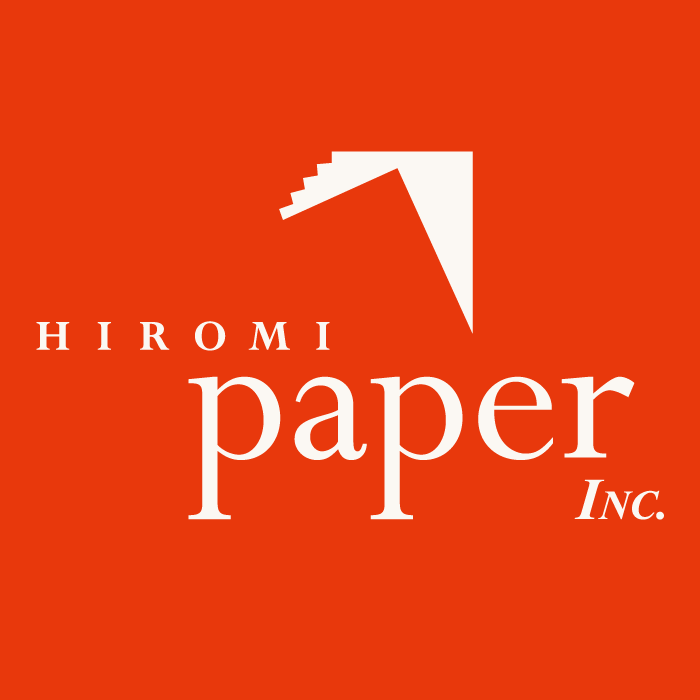
Winter 2002, Volume 9, No. 1
A Passion for Paper
By Bruce Meade
|
Artist and Printers on Their Favorite Washi |
|
"The relationship is intimate, sensual. Usually physical beauty first attracts. Then a delicate caress, fingers glide slowly, memorizing pleasurable sensation. The relationship......that of artist and paper. " |
|
And as with a lover this relationship is intense and demanding. For the artist risks everything when putting down marks, the sheet must not betray or all is lost. Among the papers of the world, those from Japan, especially handmade, hold a seductive appeal that borders on the mystical. The humble, yet inviting surface of this natural paper is desired by many of the finest artists and printers on the contemporary scene. |
|
"What I like best is how a beautiful sheet of washi is something alive. It is collaborating with my marks, imposing its own personality into the process," states Robert Kushner from his studio in New York. |
|
"I lust after the huge sheets of paper that hang on the walls of Hiromi Paper!" admits Santa Barbara artist Mary Heebner. "I see these sheets as vast spaces, like an ocean, beckoning me like sirens." |
|
While the appeal of Japanese papers is broad, many artists and printers have developed strong attachments to a specific paper. |
|
"The artists I work with appreciate the beauty of Kitakata, the color, texture, and deckle," says Master Printer Ed Hamilton, who has collaborated on editions for Ed Ruscha, Joe Goode, and Raymond Pettibon among many others. |
|
John Greco of Josephine Press also relies on Kitakata for chine colle. "I like its strength, receptability of delicate ink transitions, and warm earthy tone." |
|
Gampi papers have their own loyal group of admirers. Gampi is a shrub that cannot be cultivated, it grows wild in the mountains of Japan, and paper made from it has a very special quality. |
|
"Delicate, translucent, holds color, and it feels good," states artist Peter Alexander, who uses gampi for his digital printing projects. |
|
"Machine made Gampi natural is above all our pick for optimum beauty, price and flexibility. We use it for chine colle when editioning our fine art intaglio prints. We find that the gampi provides a great surface for a beautiful impression, even on our most delicate spit bites," says enthused printers Emily York and Scott Heath of Berkeley's Paulson Press. |
|
Another artist enamored of gampi for chine colle is Brian Shure. "Especially handmade, Indigo dyed. It prints beautifully, and is thin, strong and shiny," says Shure. Quite a compliment from the man who literally wrote the book on the process. His "Chine Colle: A Printers Handbook" was recently published by Crown Point Press. |
|
There is no denying that in relationships the element of surprise is often highly valued. Thus for certain artists the unpredictable interaction of their media with washi holds strong appeal. |
|
"Shikishi is great when using water color" according to painter Stephen Robert Johns. "You don't realize how thick and fibrous this paper is until you see your color run upon application.....The color travels on its own accord, moving along with the fiber, and layering within its construction. It's like a sponge. Such body! Such soul!" |
|
Another artist who enjoys enticing the magical accident is Ned Evens. His favorite paper --Zangetsu (SH-6), a sheet made of kozo and pulp. "It's both tough and fragile at the same time. I kind of dye the paper, then let it dry. Then use pastels. It's probably the worst paper to do pastels on because you can't rub it too hard or the fibers begin to roll together and tear. But for some reason I like the diversity between the materials. And the paper works great with pastel dust." |
|
Los Angeles based Maddy LeMel also thrives on taking a paper and using it outside its usual context. She uses Tengucho Thinnest, a paper most often used by conservators for hinging. In LeMels' hands the paper takes on a new, more poetic function. "It's like air- it floats and moves on the slightest air current. It's practically transparent, magical. It acts like a veil over other papers. I use it as an overlay on top of mulberry paper. I print an image on the mulberry, then sew the Tengucho on top with another image." |
|
At the opposite end of the spectrum from tissue thin tengucho is Francessa Gabbiani's favorite paper- Triple Thick Kozo(DHM-11), an enormous two meter by three meters in size! "I use it like other artists use canvas. It's a support for my collages, sometimes visible, sometimes not," says the artist. |
|
It is no surprise that so many contemporary image-makers are enamored of Japanese paper. For over a thousand years creative spirits have trusted in washi to help bring forth their most heartfelt visions. Hiromi Paper International is proud to be part of this heritage, and we hope to help keep the tradition of beautiful, sensuous, handmade Japanese paper alive in the 21st century. |
|
Note: A huge thank you to all the artists and conservators who so graciously gave of their time to answer questions for this article. Limitations of space (and authors ability) prevented use of every reply. |
